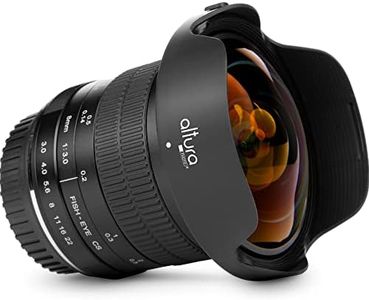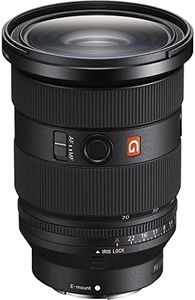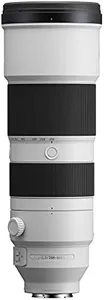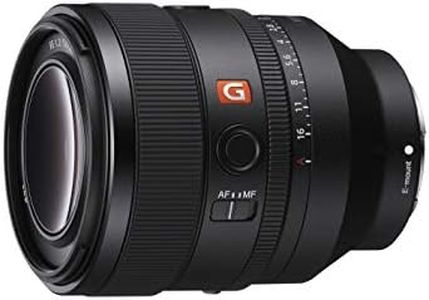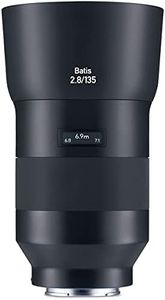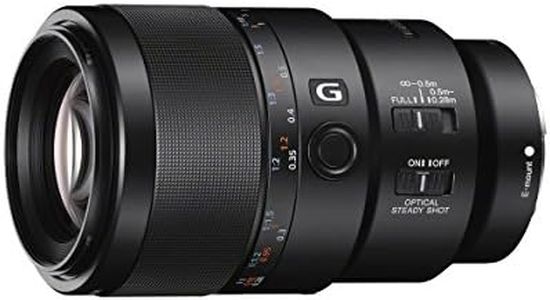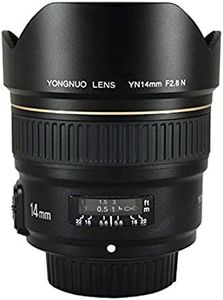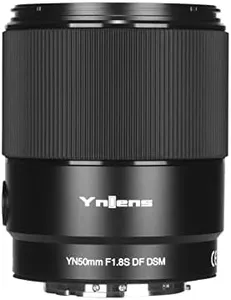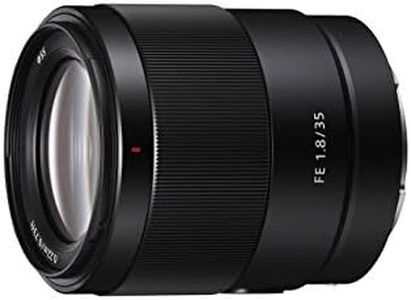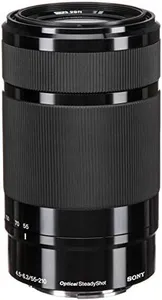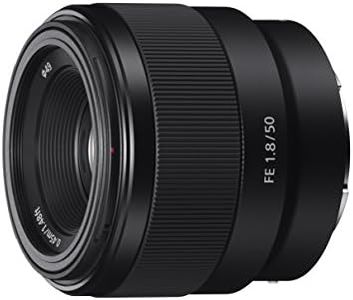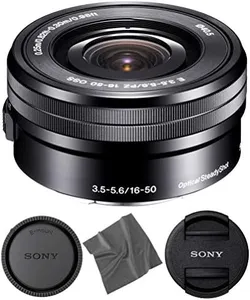10 Best Sony Mirrorless Lenses 2025 in the United States
Our technology thoroughly searches through the online shopping world, reviewing hundreds of sites. We then process and analyze this information, updating in real-time to bring you the latest top-rated products. This way, you always get the best and most current options available.

Our Top Picks
Winner
Sony FE 24-70mm F2.8 GM II Lens Black
Most important from
280 reviews
The Sony FE 24-70mm F2.8 GM II lens is a standout choice in the mirrorless lens category, particularly for photographers and videographers looking for a versatile zoom lens. With a focal length range of 24-70mm and a constant aperture of F2.8, this lens excels in various lighting conditions, making it ideal for landscapes, portraits, and events. One of its most remarkable features is its lightweight design; weighing just 24.6 oz (695 g) and being roughly 20% lighter than its predecessor, it enhances portability without sacrificing performance.
The advanced autofocus system, equipped with four XD Linear Motors, ensures fast, precise, and quiet focusing, which is a significant advantage for both still photography and video work. The lens also minimizes focus breathing, allowing for smoother transitions in video recordings. Additionally, the high-quality optical design featuring extreme aspherical and extra-low dispersion elements contributes to exceptional image clarity and minimal distortion, even at wide open apertures.
However, there are a few drawbacks to consider. While the lens is designed for professional use, its price point may be a bit steep for hobbyists or casual photographers. Additionally, although it offers great build quality, the lens may still feel large for those who prioritize compactness in their gear. Lastly, while there are improvements in autofocus and image stabilization, some users might find that it doesn't completely eliminate the need for a tripod in low-light situations or when shooting at slower shutter speeds.
Most important from
280 reviews
Sony FE 200-600mm F5.6-6.3 G OSS Super Telephoto Zoom Lens (SEL200600G)
Most important from
444 reviews
The Sony FE 200-600mm F5.6-6.3 G OSS is a versatile super telephoto zoom lens that excels in delivering high-resolution images across its focal range, making it a great choice for wildlife and sports photography. Its focal length range of 200-600mm provides the flexibility to capture distant subjects with impressive detail. The lens features a combination of 5x ED glass elements, which effectively reduce flare and ghosting, ensuring clear and vibrant images even in challenging lighting conditions. The direct drive Supersonic Wave Motor allows for fast, quiet autofocus, which is crucial for capturing moving subjects without disturbing the scene. Additionally, the aspherical lens element helps to minimize spherical aberration, improving image quality.
On the downside, the lens is relatively heavy at 4.66 pounds, which might be cumbersome for extended handheld shooting. Its size can also make it less portable, particularly if you're looking for a lightweight option to carry for long periods. The maximum aperture of F5.6-6.3 means it might struggle a bit in low-light situations, requiring higher ISO settings to achieve the desired exposure. While the lens is compatible with Sony FE and E mounts, its price point could be a consideration for amateur photographers or those just starting in telephoto photography.
Most important from
444 reviews
Sony FE 50mm F1.2 GM Full-Frame Large-Aperture G Master Lens Black
Most important from
246 reviews
The Sony FE 50mm F1.2 GM lens is an impressive option for photographers seeking high-quality results with a prime lens. Its standout feature is the wide F1.2 maximum aperture, which allows for a beautiful shallow depth of field and stunning background blur, making it perfect for portraits and low-light situations. The three Extreme Aspheric elements enhance the lens's sharpness and resolution, providing excellent image quality across the frame. Many users appreciate the 11-blade circular aperture, which contributes to the smooth and pleasing bokeh that this lens is known for.
In terms of build quality, this lens is both compact and lightweight, which makes it easy to carry around while shooting. Its compatibility with Sony E-mount cameras makes it a great choice for both full-frame and APS-C users.
It is important to consider some drawbacks as well. Weighing in at 1.72 pounds, it may feel a bit heavy for extended use compared to other lighter lenses. Additionally, while the price reflects its premium features and quality, it might be a stretch for those on a tighter budget. Also, since it is a prime lens, it doesn’t offer zoom capabilities, which some photographers may find limiting in versatile shooting scenarios.
Most important from
246 reviews
Buying Guide for the Best Sony Mirrorless Lenses
Choosing the right Sony mirrorless lens can significantly enhance your photography experience. The right lens will depend on what you plan to shoot, your skill level, and your personal preferences. Understanding the key specifications of lenses will help you make an informed decision that best suits your needs.FAQ
Most Popular Categories Right Now
